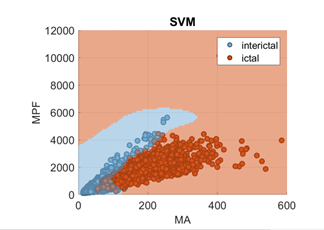Research and development in the areas of Bioengineering and Bioinformatics are impacting the science and technology in fields of medicine, food production, forensics, etc. This research is advancing fundamental concepts in molecular biology, by helping us understand living organisms at multiple levels, by developing innovative implants and bio-prosthetics, and by improving tools and techniques for the detection, prevention, and treatment of diseases.
This week we’ve selected Top 5 trending articles from EUDL library.
- Absence seizure detection classifying matching pursuit features of EEG signals
The authors of this paper, Katerina Giannakaki, Giorgos Giannakakis, Pelagia Vorgia, Michalis Zervakis, propose a method for absence seizures detection based on EEG signals decomposition via the Matching Pursuit (MP) algorithm. Based on the ictal EEG semiology, MP features were extracted able to track the ictal pattern. Thisanalysis was performed in a clinical dataset of 8 pediatric patients (4 females, 4 males) suffering from activeabsence epilepsy, containing 123 absence seizures in total. Automatic classification schema based on Machine Learning techniques were employed to categorize the MP patterns into non-ictal and ictal states. This article appeared in issue 1 of EAI Endorsed Transactions on Bioengineering and Bioinformatics.

2. Well-being Forecasting using a Parametric Transfer-Learning method based on the Fisher Divergence and Hamiltonian Monte Carlo
The authors of this paper, Eirini Christinaki, Tasos Papastylianou, Sara Carletto, Sergio Gonzalez-Martinez, Luca Ostacoli, Manuel Ottaviano, Riccardo Poli, and Luca Citi, propose a parametric transfer-learning method based on the Fisher divergence, where information from other patients is injected as a prior term into a Hamiltonian Monte Carlo framework. We test our method on the NEVERMIND dataset of self-reported well-being scores. This article was published in issue 1 of EAI Endorsed Transactions on Bioengineering and Bioinformatics.

3. Hybrid Adaptive Parametric Frequency Analysis
In this research paper, Kriton Konstantinidis, Emery N. Brown test the extended model on EEGs from human patients under propofol, ketamine and sevoflurane and illustrate the advantages over its Gaussian counterpart. Hybrid Adaptive Parametric Frequency Analysis appeared in issue 1 of EAI Endorsed Transactions on Bioengineering and Bioinformatics.

4. Texture-based Feature Extraction for COVID-19 Pneumonia Classification using Chest Radiography
L. V. Moura, C. M. Dartora, C. Mattjie, R. C. Barros, A. M. Marques da Silva investigate classification models to differentiate COVID-19-based and typical pneumonia in chest radiography. They use 136 segmented chest X-rays to train and evaluate the performance of support vector machine (SVM), random forest (RF), AdaBoost (AB), and logistic regression (LR) classification methods. Texture-based Feature Extraction for COVID-19 Pneumonia Classification using Chest Radiography was published in issue 2 of EAI Endorsed Transactions on Bioengineering and Bioinformatics.

5. Parallel Implementation of String-Based Clustering for HT-SELEX Data
A clustering method for HT-SELEX is crucial for selecting different types of aptamer candidates. The auhors of this research, Shintaro Kato, Takayoshi Ono, Masaki Ito, Koichi Ito, Hirotaka Minagawa, Katsunori Horii, Ikuo Shiratori, Iwao Waga, and Takafumi Aoki have developed FSBC method for HT-SELEX data implemented in R. FSBC exhibited the highest accuracy of sequence clustering compared with conventional methods, while the processing time of FSBC is longer than AptaCluster. This article appeared in issue 1 of EAI Endorsed Transactions on Bioengineering and Bioinformatics.
EAI Endorsed Transactions on Bioengineering and Bioinformatics (BEBI), formerly EAI Endorsed Transactions on Ambient Systems, aims at building intelligent synergies and systems among Bioinformatics, Computational Biology, Bioengineering and Biomedicine.
Subscribe to EAI Endorsed Transactions on Bioengineering and Bioinformatics journal and never miss new content in your field of research

